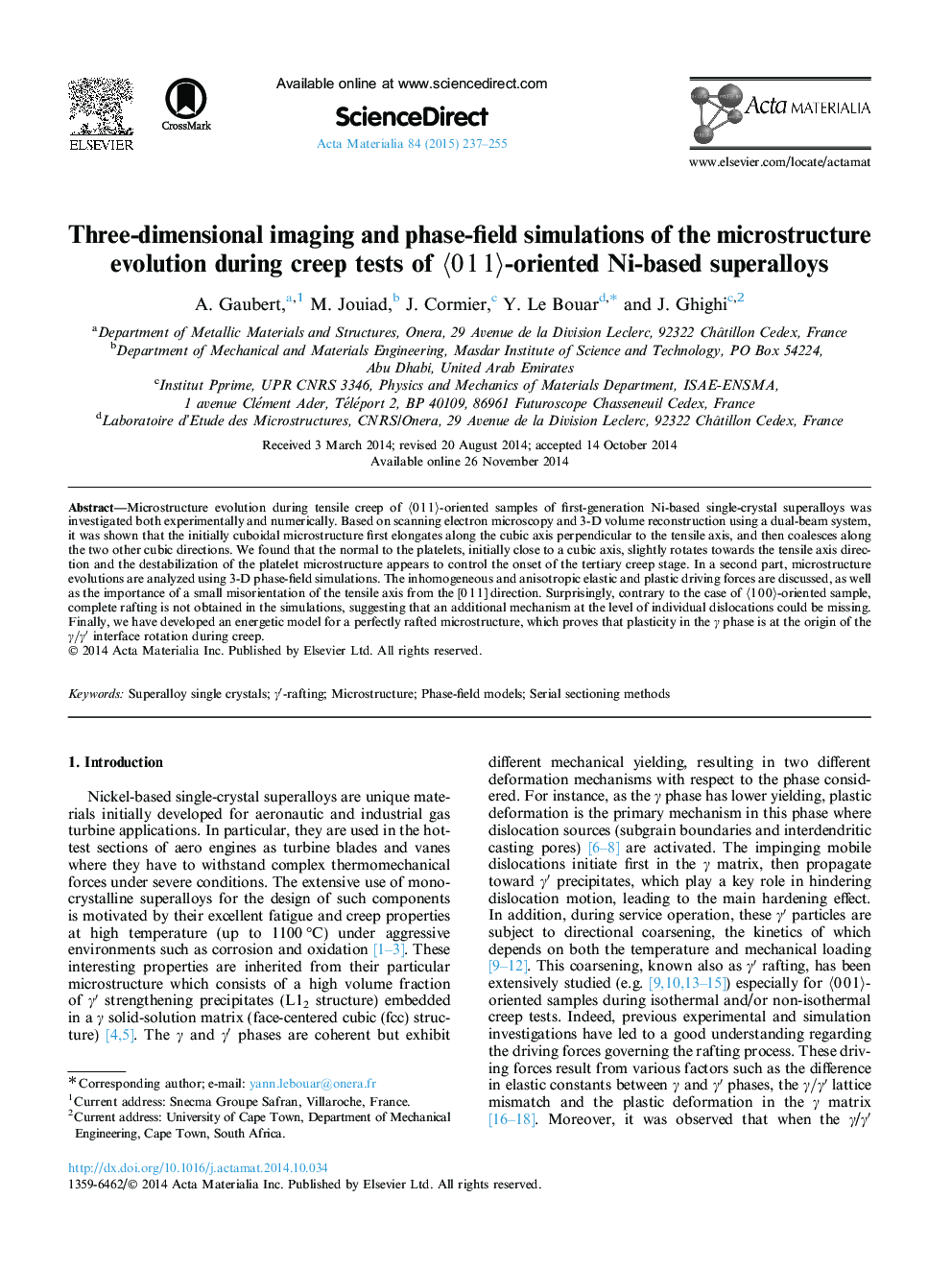| Article ID | Journal | Published Year | Pages | File Type |
|---|---|---|---|---|
| 1445432 | Acta Materialia | 2015 | 19 Pages |
Microstructure evolution during tensile creep of 〈011〉-oriented samples of first-generation Ni-based single-crystal superalloys was investigated both experimentally and numerically. Based on scanning electron microscopy and 3-D volume reconstruction using a dual-beam system, it was shown that the initially cuboidal microstructure first elongates along the cubic axis perpendicular to the tensile axis, and then coalesces along the two other cubic directions. We found that the normal to the platelets, initially close to a cubic axis, slightly rotates towards the tensile axis direction and the destabilization of the platelet microstructure appears to control the onset of the tertiary creep stage. In a second part, microstructure evolutions are analyzed using 3-D phase-field simulations. The inhomogeneous and anisotropic elastic and plastic driving forces are discussed, as well as the importance of a small misorientation of the tensile axis from the [0 1 1] direction. Surprisingly, contrary to the case of 〈100〉-oriented sample, complete rafting is not obtained in the simulations, suggesting that an additional mechanism at the level of individual dislocations could be missing. Finally, we have developed an energetic model for a perfectly rafted microstructure, which proves that plasticity in the γ phase is at the origin of the γ/γ′γ/γ′ interface rotation during creep.
